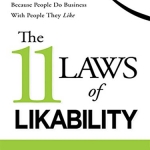In Blogging, Clarity Depends on Contrasts

The following true story, shared in Daniel Pink’s book To Sell is Human, involves a blind man sitting on a bench in Central Park with a can for contributions labeled “I’m blind”. With the addition of only 4 words, an ad exec realized, the sign would move more people to put money in the can. When the sign stated “It is springtime, but I am blind”, people were able to feel pity – here they were, enjoying the gorgeous spring day, while this poor blind man was totally unable to savor its beauty….
“One aspect of contemporary society is that people are stimulus-rich and context-poor,” Pink explains. They don’t know what the information means. By contrasting the experience of the passersby with that of the blind man asking for change, viewers saw the man’s situation in perspective.
In the book Predictably Irrational, Dan Ariely talks about the importance of comparing one thing with another. People want to make their own decisions and own them, Ariely believes. For that reason, he advises, if you want to sell Product A, you must create an Option B, so that customers feel they are choosing A because it contrasts favorably with B.
In blog content writing, with the goal being engaging online visitors’ interest, we can create contrast between analytical content and emotional content, toggling back and forth among It helps to remember that most people are only interested if what you do fits with what they need or want; otherwise they are not interested. You must tell readers, not only how your product or service can benefit them, but how you can do it better or differently than others who do what you do.
The blind man in Daniel Pink’s story needed help creating a Unique Selling Proposition. In carving out your own USP, make sure your message tells visitors not only who you are and what you do, but why you’re different from other providers – and why that difference should matter to them.
In other words, in begging or blogging, clarity depends on contrasts!





Follow us online!